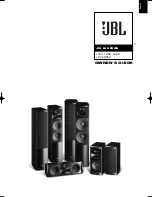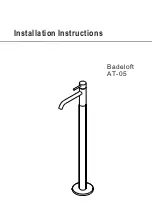
25
Output
Cutting
Thickness
Current
Speed
Material
(In.)
(Amps)
(ipm)
Carbon
1/16
30
170
Steel
1/8
30
75
(AISI 1020)
3/16
30
48
1/4
30
25
3/8
30
12
Stainless
1/16
30
170
Steel
1/8
30
72
(AISI 304)
3/16
30
45
1/4
30
23
3/8
30
10
Aluminum
1/16
30
170
(6061)
1/8
30
75
3/16
30
50
1/4
30
26
3/8
30
12
SeCTION 3
OPeRATION
3.6 COmmON CUTTING PROBlemS
Listed below are common cutting problems followed by the
probable cause of each. If problems are determined to be
caused by the Prest-O-Lite
®
380, refer to the maintenance
section of this manual. If the problem is not corrected after
referring to the maintenance section, contact your Prest-O-
Lite representative.
A. Insufficient Penetration.
1. Cutting speed too fast.
2. Damaged cutting nozzle.
3. Improper air pressure.
B.
main Arc extinguishes.
Cutting speed too slow.
C.
Dross Formation. (In some materials and thicknesses,
it may be impossible to get dross-free cuts.)
1. Cutting speed too fast or too slow.
2. Improper air pressure.
3. Faulty nozzle or electrode.
D. Double Arcing. (Damaged Nozzle Orifice.)
1. Low air pressure.
2. Damaged cutting nozzle.
3. Loose cutting nozzle.
4. Heavy spatter.
e.
Uneven Arc.
Damaged cutting nozzle or worn electrode.
F.
Unstable Cutting Conditions.
1. Incorrect cutting speed.
2. Loose cable or hose connections.
3. Electrode and/or cutting nozzle in poor condi-
tion.
G. main Arc Does Not Strike.
1. Loose connections
2. Missing torch parts
3. Air pressure too high or too low
4. Work lead not properly connected
h. Poor Consumable life.
1. Improper air pressure.
2. Contaminated air supply.
NOTe:
The speeds given here are typical for best quality cuts.
Your actual speeds may vary depending on material
composition, surface condition, operator technique,
etc. If cutting speed is too fast, you may lose the cut.
With slower speeds excessive dross may accumulate. If
speed is too slow, the arc may extinguish. Air cutting
typically produces a rough face on stainless steel and
aluminum.
Cutting Speed Range — Prest-O-lite
®
380
(Using Air with xT Consumables @ 70 psi)
3.5 OPeRATING TeChNIQUeS
1. Piercing - Materials may be pierced with the torch touch-
ing the work. When piercing thicker materials of 1/4" or
more, immediately raise the torch to 1/16" standoff after
initiating the cutting arc. This will reduce the chance of
spatter from entering the torch and prevent the possibility
of welding the tip to the plate. The torch should be angled
at about 30° when starting to pierce. After completing the
pierce, bring the torch to an upright position and proceed
to cut by dragging the torch along the workpiece. Refer-
ence Figure 3-4.
2. Grate Cutting - For rapid restarts, such as grate or heavy
mesh cutting, do not release the torch switch. This avoids
the 2 second preflow portion of the cutting cycle.
Summary of Contents for 380
Page 4: ... TABLE OF CONTENTS ...
Page 14: ...14 SECTION 1 DESCRIPTION ...
Page 26: ...26 SECTION 3 OPERATION ...
Page 30: ...30 SECTION 4 MAINTENANCE WORK LEAD CONNECTION TORCH CONNECTION ...
Page 41: ...41 Notes ...
Page 42: ...Notes ...
Page 43: ...Revision History Original release 06 2006 03 2007 Revised Title Page layout text ...
















































